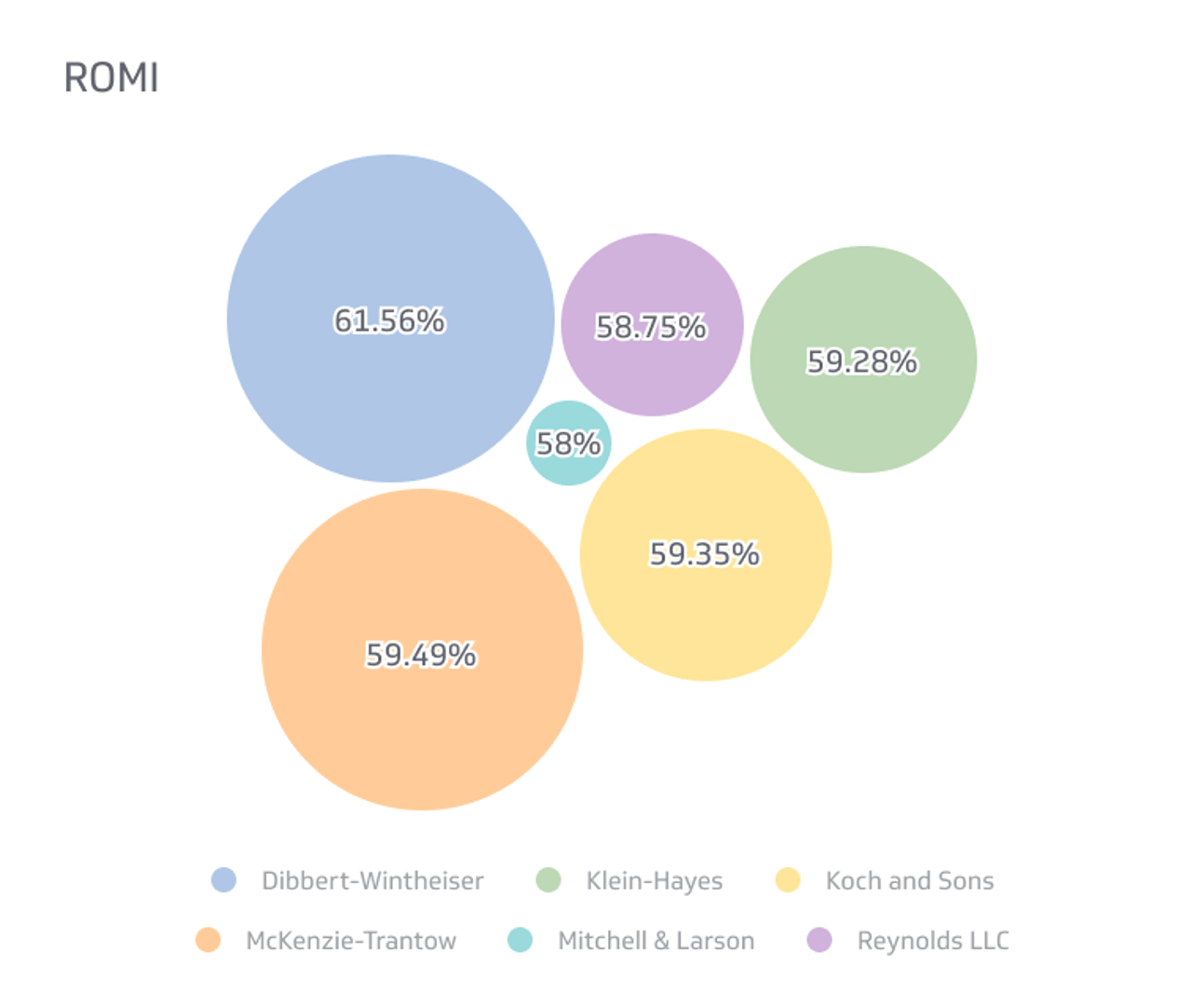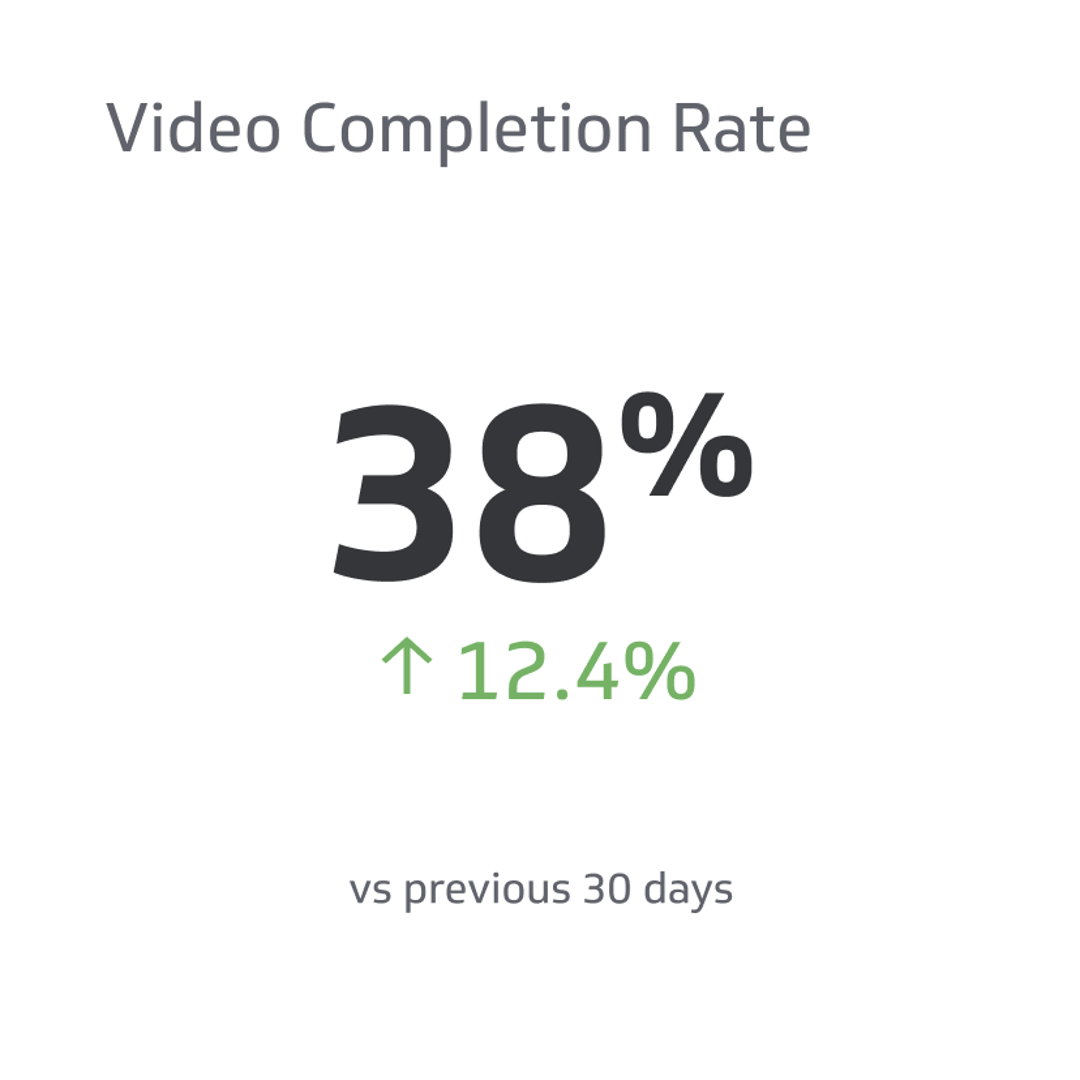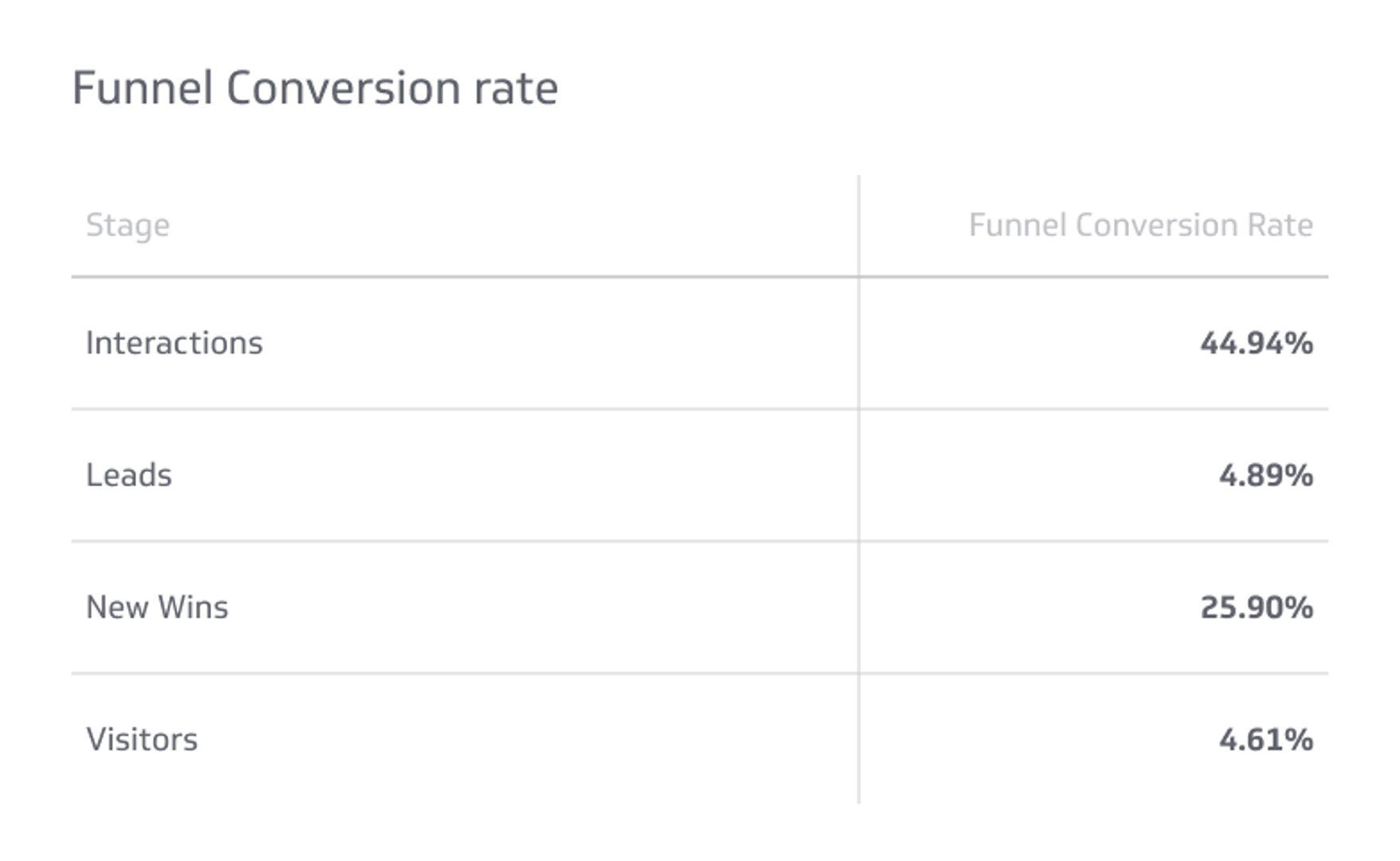Return on Marketing Investment (ROI)
Measure the ability of marketing campaigns to generate new revenue.
Track all your Digital Marketing KPIs in one place
Sign up for free and start making decisions for your business with confidence.
.png)
Return on Marketing Investment (ROI) =
(Sales Growth – Marketing Cost) x 100 / Marketing Investment
What is Marketing Return on Investment (ROI)?
The Return on Marketing Investment KPI measures how much revenue a marketing campaign is generating compared to the cost of running that campaign. Effective marketers are driven to connect their time, energy, and advertising spend with results that contribute to company growth. This KPI answers the question, “are we recouping the time and money we spent developing and executing our marketing campaigns?”
Marketing ROI Key Terms
- Leads: New prospects generated by a marketing campaign.
- Incremental sales: New revenue generated by a marketing campaign (see "Incremental Sales").
- Wins: New customers generated by a marketing campaign.
Marketing Return on Investment Example
Let’s say we have a company that averages 4% organic sales growth, and they run a $10,000 campaign for a month. The sales growth for that month is $15,000. The calculation goes:
Return on Marketing Investment = [($15,000 - $10,000) / $10,000)] x 100
= 50%
Return on Marketing Investment Benchmarks
There are various ways to benchmark your marketing campaigns' Return on Marketing Investment to narrow down the metric to fit your objectives. Here’s some expert advice and rules of thumb:
- Marketers should measure Return on Marketing Investment against the following benchmarks: industry, campaign spending, the same month from the previous year, and what your boss expects.
Rhys Williams, Managing Partner, agenda21
- It is best for marketers to independently benchmark: look at how you did last year and last month.
Return on Marketing Investment Success Indicators
Return on Marketing Investment success indicators are metrics used to measure the effectiveness of a marketing campaign in generating returns for the business. Some common success indicators include:
- Conversion rate: The percentage of visitors who complete a desired action on the website or landing page, such as making a purchase or filling out a form.
- Customer acquisition cost (CAC): The cost incurred to acquire a new customer, which includes all marketing and advertising expenses.
- Customer lifetime value (CLV): The total value a customer is expected to bring to the business over their lifetime, including repeat purchases and referrals.
- Brand awareness: The level of recognition and recall that consumers have for a brand, which can be measured through surveys, social media mentions, and other metrics.
- Engagement rate: The level of interaction and engagement that consumers have with a brand's content, such as social media posts, email campaigns, and blog articles.
By monitoring and analyzing these metrics, businesses can assess the effectiveness of their marketing campaigns and make data-driven decisions to optimize their marketing strategy and maximize their ROI.
Return on Marketing Investment Challenges
Despite the quintessential importance of marketing ROI, it can be difficult to measure and monitor. Measuring the ‘investment’ side of the equation is typically straightforward, you track hours spent planning and executing marketing campaigns and dollars spent securing advertising space online and offline. But measuring returns on marketing investment is more complicated for several reasons.
Numerous Campaigns
First, most marketers today run a wide variety of campaigns simultaneously. This can make it difficult to stay on top of spending and the performance of each individual campaign.
Lack of Control
Second, in our fast-paced digital world, marketing campaigns can take on a life of their own, and it can be difficult to monitor and measure the effects of marketing messages that are being spread by an external audience.
Seeing the bigger picture
Lastly, and in relation to the first two challenges, connecting the dots between marketing campaigns and the achievement of marketing goals can be challenging. Multiple marketing messages often reach a target audience through a variety of marketing channels: which one resonated? What call to action incited action?
Faced with these challenges, the most effective way to measure marketing ROI is to combine and compare data sets from a variety of sources (Google Analytics, Google Adwords, your Marketing Automation Platform, and CRM) to identify data correlations and trends over time. If you’re seeing that increasing your Adwords spend is consistently coinciding with a bump in website traffic and that the bump in website traffic is leading to more leads and more sales, you can break that conversion loop down and come up with a return on investment KPIs as straightforward as these:
- New Website Users/Trial Start: 25
- Adwords Spend/New Customer: $35
Return on Marketing Investment Best Practices
There are many possible ‘returns’ on marketing investments. A marketer might target ‘top of the marketing funnel’ returns such as increased brand mentions online or new website traffic. They may be interested in driving more leads through the middle of the funnel, by targeting new trial starts or new newsletter subscriptions, for example. Or they may be directly targeting the marketing goal that connects all others: new customers and new sources of revenue. Whether the marketing target is top of the funnel or bottom of the funnel, short-term or long-term, measuring marketing’s progress toward its goals against the time and money that has facilitated that progress is critical.
How to Monitor Return on Marketing Investment in Real-time
Once you have established benchmarks and targets for measuring Return on Marketing Investment, you’ll want to establish processes for monitoring this and other digital marketing KPIs. Dashboards can be critical in this regard.
Learn more about how to track your Return on Marketing Investment on a Digital Marketing Dashboard.
Marketing Return on Investment: Top Resources
4 Ways of Measuring Marketing ROI, Sylvia Jensen
Search Marketing: How to best benchmark and measure ROI, Neil Davey
How to Calculate ROI of a Marketing Campaign, Andrew Beattie
Related Metrics & KPIs



